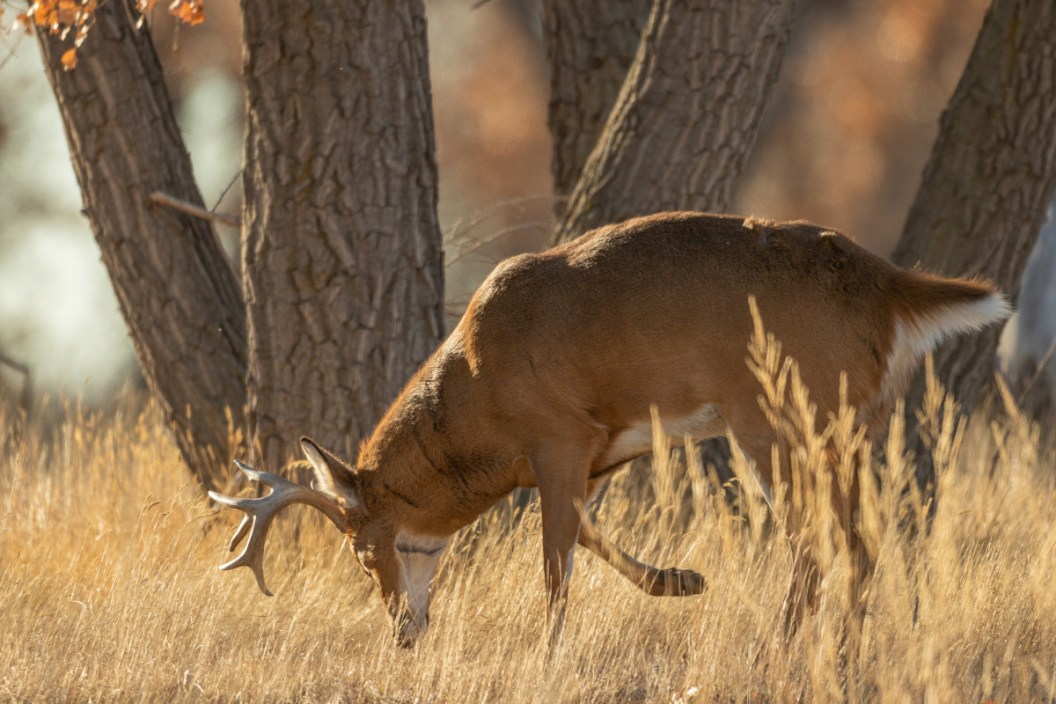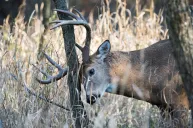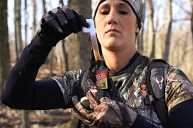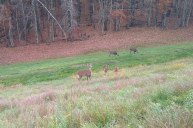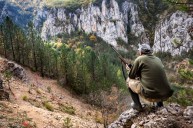The world of the whitetail deer can seem like a mysterious one. At first glance deer seem to move with little rhyme or reason to their actions. However, a closer look reveals they are very social animals with many ways of communicating beyond sound and visual displays. One of the more unique ways they convey information is deer scrapes. These torn-up patches of earth have both fascinated and mystified humans for years. While many deer hunters believe scrapes are made primarily by mature bucks during the rut, it turns out that all deer participate in scraping activity to some degree. In fact, it happens at all times of the year and not just peak breeding season.
Scrapes are a good indicator that deer are hanging out in and using an area actively. Once you have a better idea of what deer are saying to one another when they use an active scrape, you stand a better chance of ambushing that big buck. Today we'll go over what the different types of scraping activity, what we know about what deer are saying with these signposts in the woods, and the best ways to plan your hunting around scrapes and scrape lines this season.
Why Do Deer Make Scrapes?
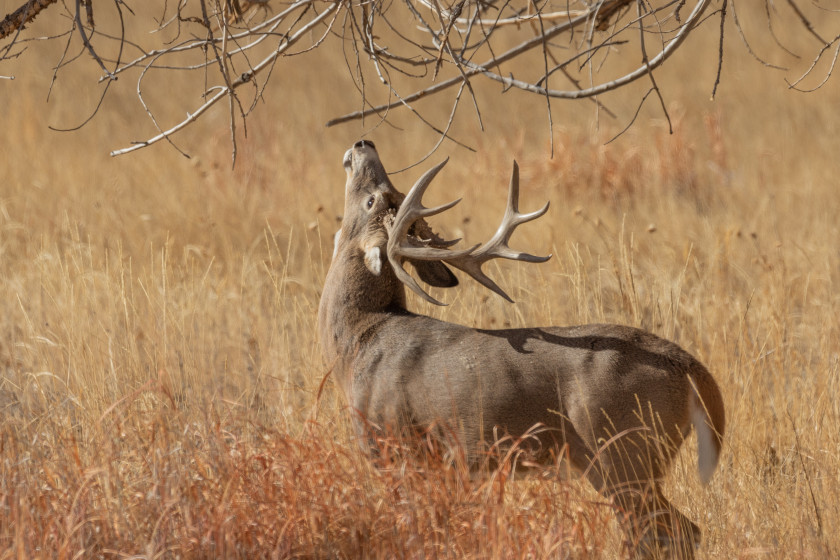
twildlife via Getty Images
There are a few different types of whitetail scrapes, but it's helpful to think of them as a kind of community bulletin board. From what researchers have been able to determine, the act of pawing up the earth creates a visual cue that helps other deer find the scrape. When a deer uses a scrape, they will usually urinate in it to leave their scent behind. One common behavior, especially with big bucks, is for the deer to rub the tarsal glands between their back legs together and urinate on that. It strengthens the smell, and for bucks, it leaves behind a claim that this is his territory.
Deer will also leave their scent behind on an overhanging branch, often called a "licking branch," found above the scrape. The act of rubbing their face and antlers on the branch releases more scent from the deer's preorbital glands on the top of their heads, acting as another signpost the deer was there. An old theory is that estrus does will urinate in scrapes to signal their availability to nearby bucks. However, if you start reading up on the various studies into the manner, you'll find evidence that does rarely pee or paw the earth in scrapes. They will lick and rub their faces on the licking branch though, a behavior I've observed myself many times over the years. What this means to the deer is anyone's guess.
There are two commonly accepted types of scrapes. Most hunters consider primary scrapes to be the ones constructed during the peak of the rut by bucks. Meanwhile, community scrapes are just that: community signposts visited by all deer. Even yearlings and fawns might stop to leave their scent behind. Based on my own experiences placing trail cameras on scrapes, they are visited by a plethora of different deer. In fact, here in Michigan at least, I've noticed more does than bucks at most of them. What deer are communicating to one another through these community scrapes is technically uncertain, but it's likely something extremely subtle we humans are incapable of fully understanding.
How Often Do Bucks Visit Scrapes?
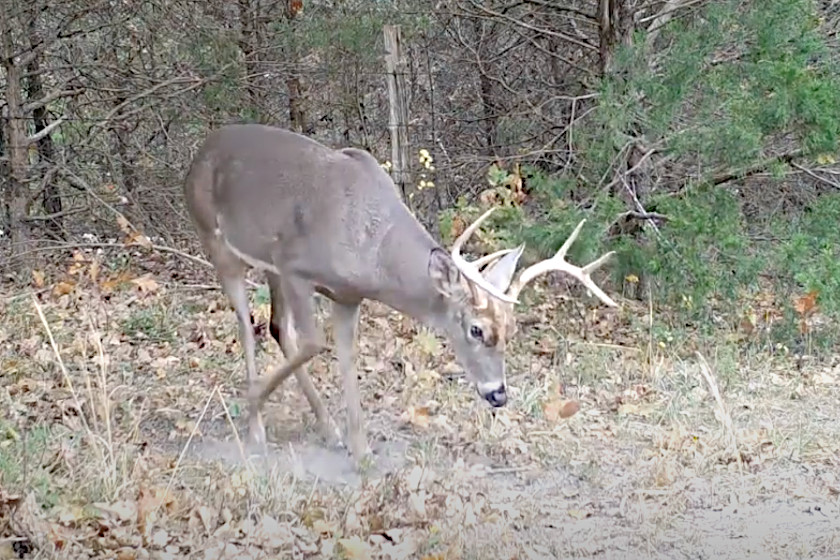
YouTube: Browning Trail Cameras
Most studies have shown that whitetail bucks will eventually return to the scrapes they've visited before. The frequency of these visits is going to vary depending on the deer. Some bucks are daily visitors, others might only drop by once a week. Every buck is going to have a different core area and territory. You might not be privy to all the activity going on because, as the Deer Association notes, a whopping 85 to 90 percent of scraping activity happens after dark. I've noticed much the same here in Michigan. Most of my daylight scrape photos are does or immature young bucks.
That's why the only true way to monitor activity on a deer scrape is with a trail camera. The photos will tell you the times bucks are visiting, the frequency of their visits, and how many are hitting a scrape. A few studies have shown more than a dozen bucks may stop to work and check out one scrape during the peak of the rut! For that reason, you should never assume just one buck is responsible for the activity you are seeing on your hunting land.
Should You Hunt Over Scrapes?

YouTube: Browning Trail Cameras
Between rubs and scrapes, most deer hunting experts will agree that scrapes probably offer better odds of success than rubs. This is because rubs are often made with less attention to detail by bucks with no intention of ever returning. It's a different story with rubs, which still serve as a vital line of communication between deer, especially during the pre-rut and rut scenarios. But they don't promise a return trip quite like a scrape does.
The tricky part of hunting scrapes is finding one the deer are using during the daylight hours. This is where using your trail camera comes into play. You'll need to critically analyze every buck sighting on the scrape to figure out when they are visiting. Sometimes patterns emerge that can help you ambush a buck.
The biggest problem with hunting established scrapes is they are not always in an ideal spot for a stand or blind placement. This is where mock scrapes come into play. They allow you to set up a pattern of deer activity in a food plot or funnel within bowhunting range. Mock scrapes also allow hunters to effectively modify the deer's behavior in some scenarios. Scent drippers are an essential tool of the mock scrape and designed to only dispense deer scent during the daylight hours. This can effectively condition a buck to start coming by in the daytime in hopes of running off the rival he's been smelling in his scrape.
Most experts will agree the hanging branch is the most vital part of the mock scrape equation. In some cases, you can goad deer into starting a new scrape simply by trimming some branches so there are overhanging limbs close to the ground. There's also a bevy of new products designed to hold tree branches at the proper height to establish a new scrape where there wasn't even a tree before. Just remember that deer are short. You're going to want to keep your mock licking branch no more than four to five feet off the ground for optimal success.
All you need to do to make a mock scrape is construct the licking branch and then tear up the ground underneath it. That typically gives enough of a visual cue that it is something other deer should check out. Sometimes you don't even need to add scent to it. The deer will just start working it because the licking branch and bare earth are there. Be sure to read our full mock scrape guide for more information.
Should You Pee on a Deer Scrape?
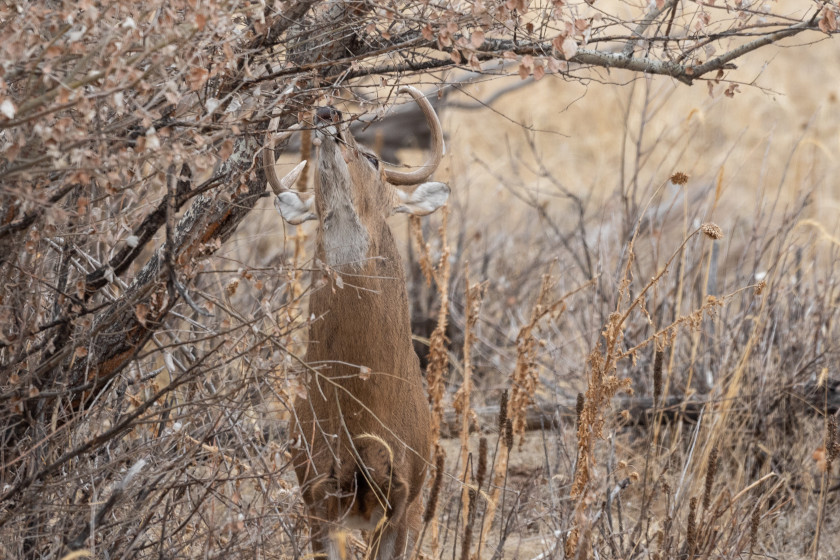
twildlife via Getty Images
Ever since hunters first discovered that bucks like to pee on scrapes, people have been speculating as to what might happen if you decide to relieve yourself in one. It should be noted one of our writers did try this years ago and got two different reactions from two different bucks on trail camera. However, he also managed to harvest the deer that seemingly spooked from the scent of human urine a few days later. He isn't alone in using this technique either.
The MeatEater notes in a rather fascinating piece that researchers decided to test human urine vs the urine of other deer in scrapes back in 1998. The result was human urine and rutting buck urine proving far more effective at peaking a buck's interest than that of an estrous doe. This seems to lend more credibility to the idea bucks are using these scrapes to communicate more with each other than potential mates.
We have even heard stories from hunters who swear peeing into a scrape leads to an increase in daylight activity. However, if you start digging, you'll also find an equal number of stories from hunters who say they tried it, and it didn't help at all. In fact, you'll find some hunters who argue the visual quality of the licking branch and pawed-up earth does more to attract a deer to a scrape than the scent. In the end, it seems deer in some areas respond better to human urine in a scrape than others. The only way to know for sure is to try it yourself.
For more outdoor content from Travis Smola, be sure to follow him on Twitter and Instagram For original videos, check out his Geocaching and Outdoors with Travis YouTube channels.
